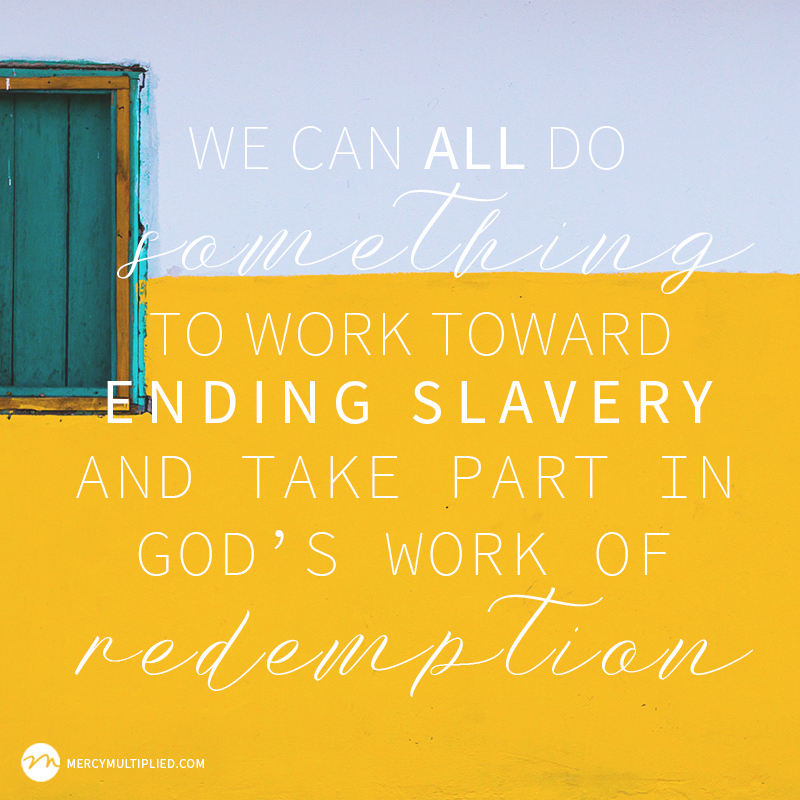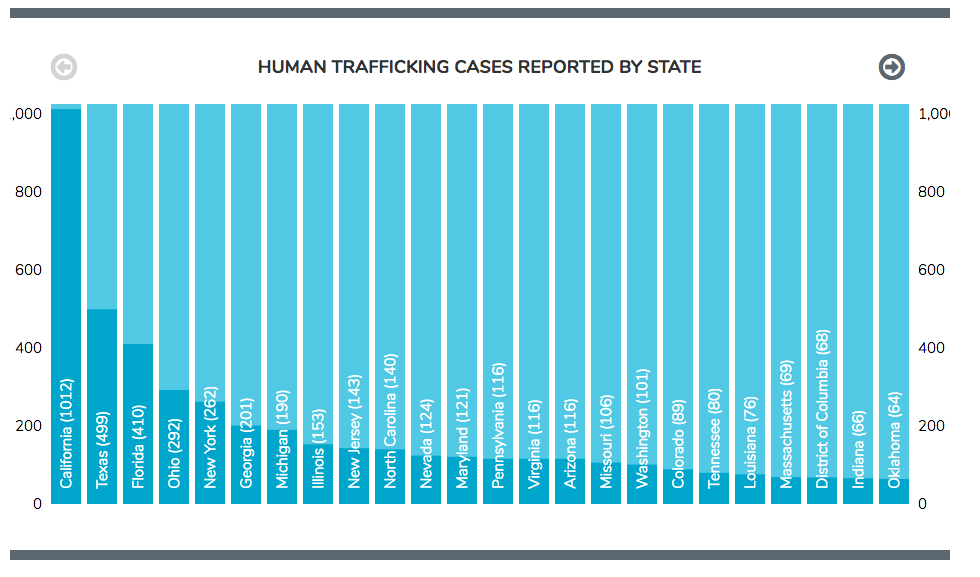In honor of National Slavery and Human Trafficking Prevention Month, Mercy Multiplied counselor, Elizabeth Burton, LMSW is writing to equip YOU to be an advocate for those facing trafficking in the United States. Elizabeth provided a great problem-solution overview on a recent Mercy Facebook Live video, but is delving a little deeper into the issues on the blog today!
Picture a young girl. She is a straight-A student and likes to hang out with her friends. She dreams of becoming a photographer and enjoys posting on her Instagram. She is 13 years old and very much like any other American girl. A man begins to like all her pictures. He initiates contact with her, and over time, she begins to feel loved and agrees to meet him after school. For the next year, she is trafficked up and down the east coast by a trafficker and sold nightly on Craigslist to adult men who ignored her age and innocence.
This is not a story to evoke fear in you or to exploit the exploited, but rather, to bring awareness that this is a reality for far too many American youth.
Defining the Problem
The injustice of modern day slavery in the form of human trafficking is not only a reality across the world, affecting an estimated 27 to 30 million individuals, but prevalent here in the United States with an estimated 200,000 to 300,000 youth at risk for sexual exploitation every year.
The United States government defines human trafficking as the act of recruiting, harboring, transporting, providing, or obtaining a person for compelled labor or commercial sex acts through the use of force, fraud, or coercion (TVPA, 2000).
Statistically, the average age of entry into sex trafficking is 12-14 years old, 80% of victims are women, and 99% of buyers are male. Individuals who are being trafficked have a 40% increased likelihood of premature death to murder, drug overdose, or suicide. To have a better understanding of the statistic in your state, check out the National Human Trafficking Hotline’s 2016 report.
In a recent Mercy Multiplied Facebook Live Video, I gave one example of what human trafficking could look like here in the U.S. However, each and every case has nuances and is different. Whether a teenager in an upper-middle class suburb or a young tween in an inner city neighborhood, human trafficking does not distinguish between zip code, socioeconomic class, race, gender, or religion.
Human trafficking could look like a teenager still living in their parents’ home, still attending school and involved in extracurricular activities, yet behind closed doors or after hours that teen is being sold, manipulated, or blackmailed by a family member, family friend, or trafficker. It is also important to note that there is no stereotypical trafficker. Traffickers come from all walks of life, races, religions, socioeconomic backgrounds, both male and female.
There are factors that heighten the risk of an individual being victimized by a trafficker: family dysfunction, substance abuse, and mental illness, to name a few. One of the most significant risk factors for a teenager in the U.S. is running away from home. It has been reported that within 48 hours, runaways will be lured into prostitution.
What can we do?
Pray
The apostle Paul encourages us to pray all kinds of prayers, in all kinds of circumstances. Prayer is an essential starting and sustaining place when fighting against the injustice of human trafficking. It can be difficult to maintain hope when becoming acquainted with the suffering of individuals who have been victimized by human trafficking. In addition to prayer, opening your heart and ears to listen, hear, and understand is key to being able to effectively engage, empathize, and help in this fight against injustice.
Educate and Advocate
We can educate ourselves, educate others, and advocate for survivors. Become aware of how to recognize human trafficking and what you can do about it.
It is important for parents and teens to be aware of the dangers of being approached by a trafficker in disguise via the Internet and all forms of social media. Communication and mutual education among parents and children is key to prevent and protect a child from being trafficked.
Homeland Security has a concise, but significant, list of indicators of human trafficking to be well acquainted with.
Understand that the trauma of human trafficking has severe physiological and psychological implications. Educate yourself on the effects of trauma, and why aftercare services and trauma informed care is needed.
The National Human Trafficking Resource Center has a hotline number that you can report suspicious activity and tips to, and its partner organization Polaris Project has a texting line. Call 1-888-373-7888 or text Help to 233733 (“BeFree”).
There are plenty of resources at our hands; educate yourself through books, media, and research. Consider joining e-mails lists and following organizations who are on the frontlines of this good fight. There are few safe houses available for survivors to heal. Consider how to best support these organizations and their efforts. We can advocate by supporting laws and policies that make it easier to prosecute traffickers and protect victims. Many states have volunteer coalitions ortask forces that are actively and strategically fighting against human trafficking and serving survivors.
Do Not Lose Hope or Be Silent
As Martin Luther King Jr. once said in the midst of the Civil Rights Movement, “Human progress is neither automatic nor inevitable…every step toward the goal of justice requires the tireless exertions and passionate concern of dedicated individuals.”
We all have something to contribute and offer – each day we can pray, learn something new, support an initiative, share and discuss this issue, volunteer our time with local organizations, and so much more. We can all do something to work toward ending slavery and take part in God’s work of redemption.
Local police officers received suspicious reports of a particular vehicle and were able to search it and find the young woman mentioned at the beginning of this post. This young woman entered into a safe house and gained a restored sense of worth. She was eventually reunited with her family and was able to make meaning from her pain and suffering by using her voice to bring awareness and relate to other survivors.
Below is a list of recommended resources, and while it is not a comprehensive list, it is a great place to just start. Today, just start!
Recommended Reading
Embracing Your Freedom by Susie Larson
Fallen by Annie Lobert
Girls Like Us by Rachel Lloyd
Good News About Injustice by Gary Haugen
Not For Sale by David Batstone
The Slave Across the Street by Thersea L. Flores
The White Umbrella by Mary Frances Bowley
Recommended Advocacy Sites and References for Information Shared Above
The Trafficking Victims Protection Act (TVPA) of 2000 and other related laws
Each year, Mercy serves women who have been victims of forced prostitution and sex trafficking. We were honored to feature 2015 Mercy Graduate Rachel’s story on our blog a few weeks ago. It courageous, informative and inspiring: Sex Trafficking – It Happened To Me.


